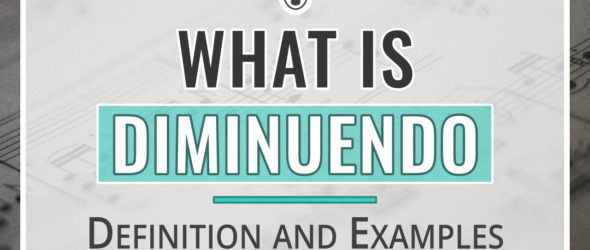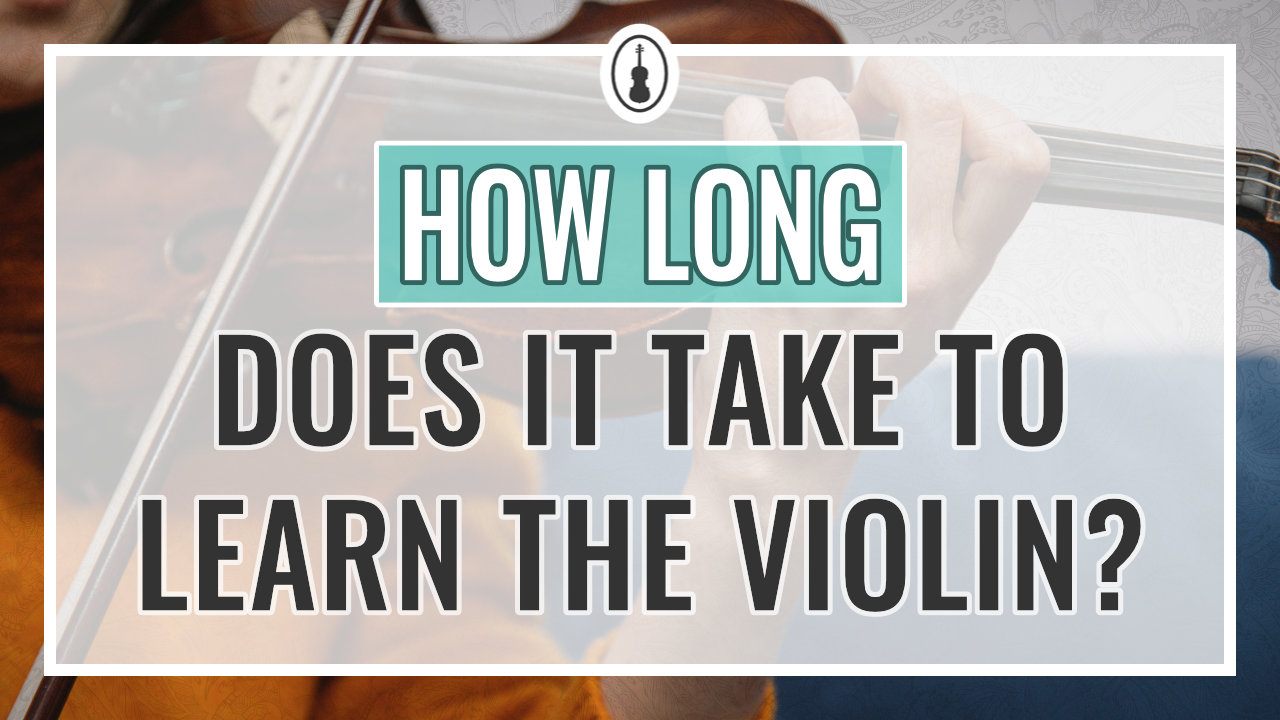Diminuendo in music is the term that means to gradually decrease the loudness. It comes from the Italian word diminuire, which means to diminish. It is opposite to crescendo, which means to increase the intensity of sound. An alternative word used for diminuendo is decrescendo.
Below I will tell you more about how it’s used in musical notation and give you some examples in classical pieces that you may know.
Diminuendo in Musical Notation
Diminuendo, which tells the player or singer to play or sing softer, can be notated in the sheet music in a few ways. It can be shown by writing ‘dim.‘ or the ‘>’ sign under the section where this change in loudness should occur. Some call the ‘>’ symbol a hairpin, because of its resemblance to the object. The length of the sign shows where the change should start and end.
If the composer or arranger prefers to use the word decrescendo, most likely it will be shortened to ‘decresc.’
In written music it may look like this:
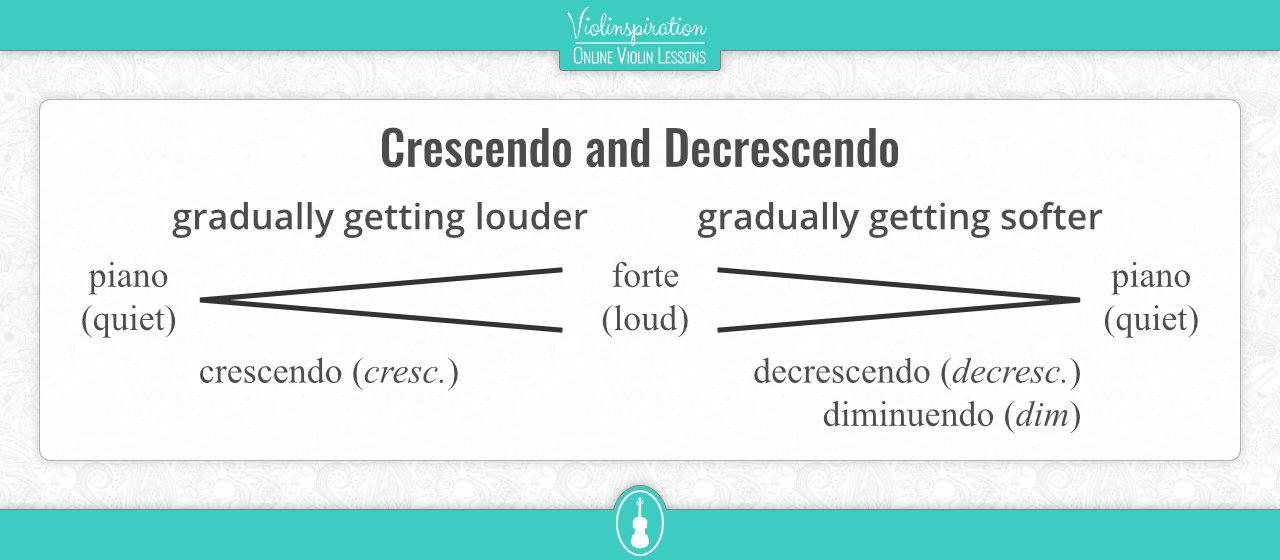
It is important to note that both crescendo and diminuendo are gradual changes, not sudden. If the music needs to go quiet suddenly, that is called subito piano and is denoted sp, and if it needs to go loud suddenly, that’s called subito forte and is denoted sf.
I also talk about crescendo and decrescendo in the following video, it contains also an explanation of signs like p, f, mf, and other signs you may see in the sheet music:
Diminuendo is Gradual
The following score illustrates how each notation can be used interchangeably with the others. From the first note through the second to the third there is a slow, gradual increase in volume, crescendo, then from the third to the last note the reverse happens, it gets quieter again.
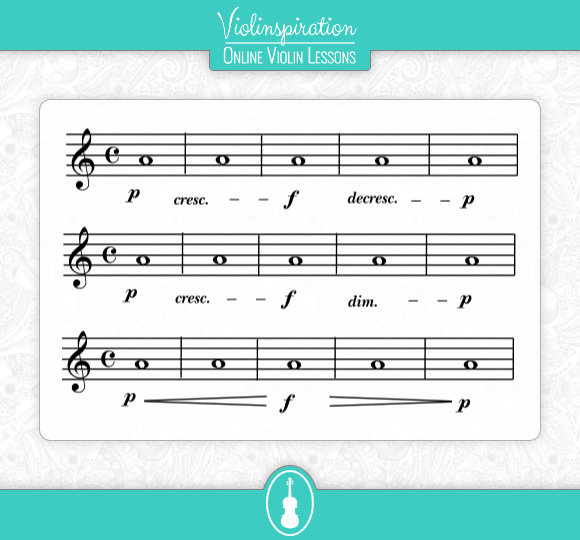
Is There a Difference Between ‘Decrescendo’ and ‘Diminuendo’?
Sometimes the word ‘decrescendo’ is used instead of ‘diminuendo’, which translates from Italian to ‘decreasing’. Even though the literal meaning of the two words is slightly different – diminishing vs decreasing – in music diminuendo and decrescendo are synonyms, meaning they mean the same thing.
In more scholarly articles there are distinctions, however. According to some, Schubert uses the terms differently. For him, decrescendo means to decrease the volume, while diminuendo means to decrease the volume and slow down.
Some musicians would agree with this interpretation, while others would use both words to mean a decrease in loudness, but not slowing down. If there is also an instruction to slow down, this would be written out explicitly, as ritardando or rit., or rallentando, or rall.
How to Do a Diminuendo on Violin?
In order to apply diminuendo to your violin playing you can do the following: reduce the bow pressure, use less bow or move the contact point towards the fingerboard. The best is to use a combination of all three options.
I recommend you experiment with all these ways to decrease and increase the sound of your violin.
To learn more about the contact point, download the guide below:
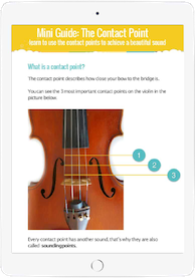
FREE Contact Point Guide
Improve Your Contact Points Technique
Examples of Diminuendo in Classical Music
To demonstrate what diminuendo sounds like in an actual piece, I am including some examples here. I tried to look for pieces where a clear distinct diminuendo can be heard, as often music goes up and down in volume in a way that’s either too fast or not very clear it was a crescendo or a diminuendo.
V. Monti – Czardas
Here, in this particular recording of Vittorio Monti’s Czardas, which was one of my favorite pieces when I was a child, there is a lovely diminuendo, very easy and clear to see what is happening:
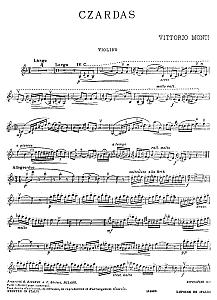
Czardas by V. Monti
Free Violin Sheet Music
T. Vitali – Chaconne
The next piece is Chaconne by Thomaso Antonio Vitali. It is a Baroque piece that is surprisingly varied and interesting, in fact, it is quite virtuosic, even modern in places.
I include the whole piece, which comes with the sheet music in the video, so you can follow it and see exactly what each ‘<‘ and ‘>’ symbol and written cresc and dim sounds like. Some of them are more clear than others, and this is normal. Therefore it is good to be able to follow the entire piece and listen to just how those musical directions are actually played.
Notice that at 4:29, there is a diminuendo, and also the words ‘poco rit‘ are written, which is the instruction for the music to slow down a little.
S. Rachmaninoff – Vocalise
Finally here is a little exercise for you. This piece by Sergei Rachmaninoff, called Vocalise, is a lovely slow piece, full of crescendos and diminuendos. For example, there is a crescendo around 14 seconds in and a diminuendo at about 22 seconds. See if you can spot some others. There is no score included here, you have only your ears to rely on.
Final Note
While at first it may seem that the word diminuendo is a simple reduction in volume, and while this is true, there are many different ways of doing this. It all depends on what works in each piece of music and which way of achieving this works best for you.
